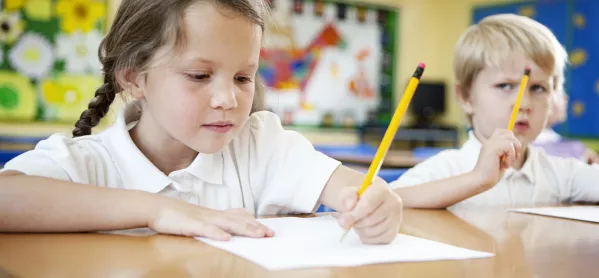Scottish government figures published today show that the proportion of pupils reaching the expected level of literacy and numeracy for their age and stage is growing - albeit slowly. However, the figures also show that, overall, more than a quarter of primary pupils are still failing to reach the expected level in literacy and around a fifth are not reaching the expected standard in numeracy.
The figures - which are based on teacher’s judgements about whether pupils are achieving the expected level for their age and stage under Curriculum for Excellence - show that 72 per cent of primary pupils were on track when it came to literacy and 79 per cent hit the expected level for numeracy.
2018 results: Poorest pupils ‘being failed badly’
2017 results: Almost a third of Scottish 12-year-olds fail to hit writing benchmark
Related: What we know about Scottish pupils’ literacy rates
Pisa: Results reveal a mixed picture for Scotland
The new figures are a rise of 1 percentage point on last year when, overall, 71 per cent of primary pupils hit the expected level for literacy and 78 per cent hit the expected level for numeracy. Last year’s figures were also an improvement on the previous year (2016-17) when 69 per cent and 76 per cent respectively reached the expected level.
In 2018-19, primary pupils’ strongest performance was in listening and talking in P1, where 87 per cent were deemed by their teachers to have achieved the expected level; the weakest performance was in writing in P4, with 73 per cent reaching the expected level.
The figures - which are informed by the Scottish government’s controversial literacy and numeracy assessments and which had the “experimental statistics” label removed this year - also show that the attainment gap between advantaged and disadvantaged pupils persists, and continues to be at a similar level to previous years.
Overall, 83.7 per cent of primary pupils from the least-deprived areas reached the expected level of literacy in primary - but only 63.1 per cent of pupils from the most deprived areas did, meaning there was an attainment gap in literacy of about 20 percentage points. The previous year the gap was 21.6 percentage points.
The attainment gap for numeracy was smaller, with 88.5 per cent of the primary pupils living in the least deprived areas reaching the expected level, compared with 71.7 per cent of the primary pupils in the most deprived areas - a difference of 16.8 percentage points. The previous year the gap was the same.
For literacy, the gap between the most advantaged and disadvantaged pupils started out as 19.2 percentage points in P1; the gap for numeracy in P1 was 13 percentage points.
By P7, the gap was 21.5 percentage points for literacy and 19.3 percentage points for numeracy.
There are five CfE levels in the broad general education that runs from nursery to S3: early, first, second, third and fourth level. The last two are expected to be achieved over the course of the first three years of secondary.
In literacy, 87.9 per cent of S3 pupils achieved level three or better; when it came to numeracy, 90.2 per cent of S3 pupils achieved level three or better. However, only 48 per cent hit of S3 pupils reached fourth level for literacy and 59 per cent reached fourth level for numeracy.
Education secretary John Swinney said the new attainment data showed “steady gains”.
He added: “In reading, writing, listening and talking, and numeracy around nine out of 10 S3 pupils achieved the third CfE level or better. Scottish education is on the right track.”
The new statistics have been published exactly a week after the Programme for International Student Assessment (Pisa) rated Scottish 15-year-olds as average in maths and science and above average for reading.
Scottish Labour said the the “continual existence of a large attainment gap” highlighted the Scottish government’s “mismanagement of education”.
Education spokesman Iain Gray said: “The SNP used to say education was their top priority. However, the continual existence of a large attainment gap for literacy and numeracy, as well as Scotland’s disappointing Pisa results, should lay that idea to rest.”





